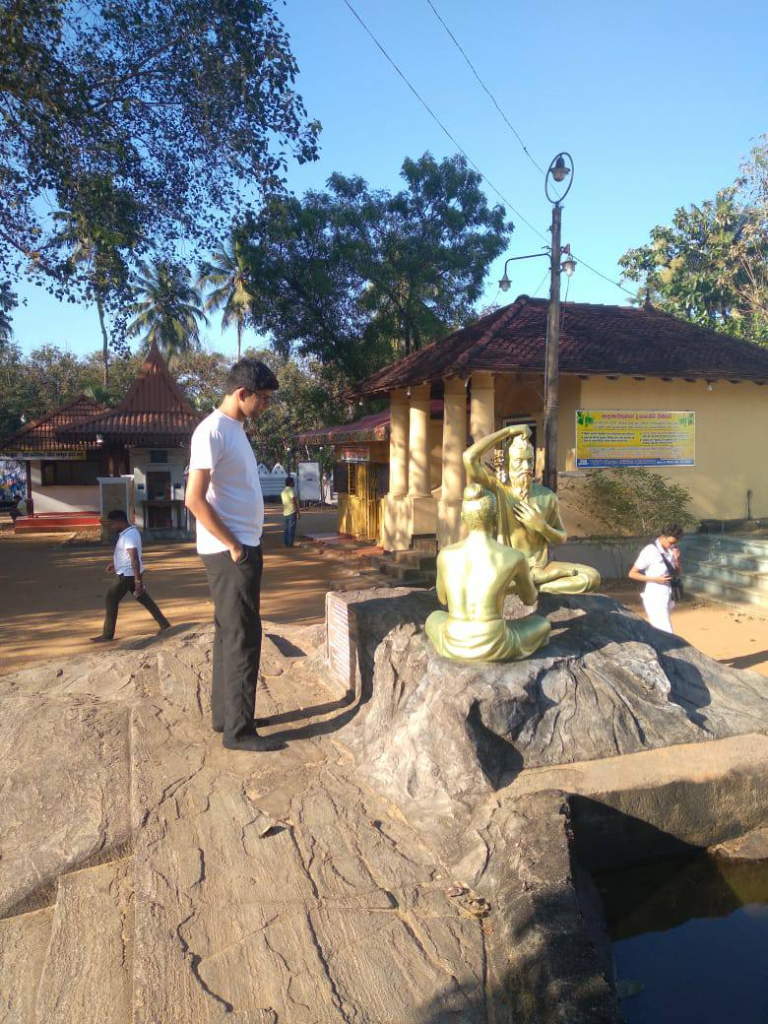Attanagalla Rajamaha Viharaya, one of Sri Lanka’s most revered Buddhist temples, is a site rich in history, culture, and spirituality. Located in the Gampaha District, this ancient temple holds a special place in the island’s religious heritage, attracting both local devotees and international travelers seeking spiritual enlightenment and historical exploration.
A Temple Rooted in History
Attanagalla Rajamaha Viharaya is famous for its connection to Buddhist legends. According to historical records, this temple is the only place in Sri Lanka where a Bodhisattva is believed to have offered his life to save another. This selfless act of generosity is a significant part of Buddhist teachings and adds to the temple’s sacred value.
The temple complex is believed to have been established over 2,000 years ago and was later developed under the patronage of Sinhalese kings, making it an important cultural landmark. Many ancient structures and relics found within the temple premises highlight the grandeur of Sri Lanka’s ancient civilization.
The Tale of King Sirisangabo
In the annals of Sri Lankan history, King Sirisangabo stands as a unique figure whose reign during the 3rd century CE is remembered not for military conquests or grand monuments, but for his extraordinary commitment to Buddhist principles of compassion and non-violence.
According to ancient chronicles, Sirisangabo ascended to the throne of Anuradhapura following King Sanghatissa II. From the beginning of his reign, he demonstrated unusual qualities for a monarch of his time. He abolished the use of corporal punishment throughout his kingdom and removed the death penalty, showing mercy even to those who had committed serious crimes.
Perhaps his most famous act was the dismantling of the palace execution grounds. Where other kings maintained gallows and execution blocks, Sirisangabo ordered these implements of death to be destroyed. He was known to personally visit prisoners, showing compassion to those whom society had condemned.
His dedication to Buddhist principles extended beyond merely sparing lives. Historical accounts tell of his personal generosity, often giving away his royal possessions to those in need. He would regularly visit temples and participate in religious observances, setting an example of pious behavior for his subjects.
However, his peaceful approach to governance created enemies among the nobility. Some viewed his merciful nature as weakness, and opposition grew within his court. When a minister named Gothabhaya began plotting against him, Sirisangabo faced a difficult choice: defend his throne through violence, or step aside to prevent bloodshed.
True to his principles, Sirisangabo chose to abdicate rather than fight. According to legend, he removed his royal regalia and secretly left the palace. He is said to have wandered as a common man into the countryside, eventually meeting a poor peasant. In an act of ultimate sacrifice, knowing there was a price on his head, he instructed the peasant to behead him and claim the reward, thus providing for the poor man’s family while preventing civil war in his kingdom.
The story of Sirisangabo represents a fascinating contradiction in leadership – a king who chose moral principle over power, and whose greatest victory came through his willingness to sacrifice everything, including his own life, for his beliefs. His reign, though brief, left an indelible mark on Sri Lankan history as an example of Buddhist ideals put into practice at the highest levels of government.
While his approach to governance might have seemed impractical in the often violent world of ancient politics, his story continues to resonate as a powerful example of leadership guided by moral conviction rather than political expedience. In Sri Lankan culture, he is remembered not as a failed king, but as a ruler who exemplified the Buddhist virtues of compassion and self-sacrifice.
Architectural and Spiritual Beauty
The temple’s architecture is a stunning blend of traditional Sinhalese craftsmanship and Buddhist artistic influences. Visitors can witness intricate murals, ancient stupas, and beautifully carved stonework that depict historical and religious events. The main shrine houses a magnificent Buddha statue, creating a serene and meditative atmosphere for visitors.
Why Visit Attanagalla Rajamaha Viharaya?
- Spiritual Significance – A sacred place for Buddhist pilgrims, offering a peaceful retreat for meditation and prayer.
- Historical Value – Learn about Sri Lanka’s ancient Buddhist traditions and royal patronage.
- Architectural Marvel – Explore the stunning murals, stupas, and carvings that reflect the island’s rich cultural heritage.
- Scenic Surroundings – The temple is surrounded by lush greenery, making it a perfect spot for photography and nature lovers.
How to Reach Attanagalla Rajamaha Viharaya?
Attanagalla Rajamaha Viharaya is easily accessible from Colombo, located about 50 km away. Travelers can reach the temple by car, bus, or train, making it a convenient day-trip destination.
Final Thoughts
If you’re a history enthusiast, a spiritual seeker, or a traveler looking to explore Sri Lanka’s hidden treasures, Attanagalla Rajamaha Viharaya is a must-visit destination. Its timeless beauty and deep-rooted cultural significance make it a perfect addition to your Sri Lanka travel itinerary.

